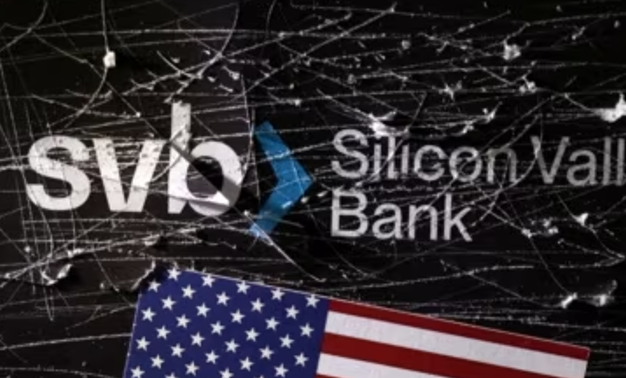Widgetized Section
Go to Admin » Appearance » Widgets » and move Gabfire Widget: Social into that MastheadOverlay zone
Silicon Valley bank failure crisis
California-based Silicon Valley Bank was founded in 1983 and was the 16th largest commercial bank in the United States before it collapsed. As of December 31, 2022, the bank had approximately $209 billion in assets and $175.4 billion in deposits, making it the largest local bank in Silicon Valley by deposits.
Silicon Valley Bank, which focuses on raising money for technology start-ups, does business with nearly half of all start-ups in the United States and 44 percent of technology and medical companies that went public in the United States last year. Notable clients include Pinterest, ZipRecruiter and Shopify.
The key to Silicon Valley Bank’s success is that it is deeply embedded in the fabric of the start-up world. Once a start-up is part of the Silicon Valley Bank ecosystem, it is able to participate in a wide range of activities and meet other investors and founders, forcing many to work with the bank.
In short, Silicon Valley banks became insolvent due to a wave of withdrawals.
On March 8th Silicon Valley Bank announced it was raising $2.25 billion to cover losses on its bond investments. That triggered confidence and customers rushed to withdraw their deposits.
On March 9, shares in the bank’s parent company plunged 60 per cent, the biggest drop in more than two decades. Investors and depositors withdrew a total of $42 billion, pushing the bank’s cash balance to negative $958 million.
On March 10, the bank’s shares were suspended after falling another 60% in the premarket. The US government stepped in, with the California Department of Financial Protection and Innovation (DFPI) announcing the closure of Silicon Valley Bank and handing it over to the Federal Deposit Insurance Corporation (FDIC).
Riding on the tech boom during the 2019-2021 coronavirus pandemic, Silicon Valley banks have taken in billions of deposits in recent years and invested much of the money in long-term U.S. government bonds.
Market interest rates were close to zero, and banks could still make money even if long-term U.S. government bonds paid only a few percentage points.
However, the U.S. Federal Reserve has aggressively raised interest rates over the past year to 4.75 percent in an effort to tame inflation. Higher borrowing costs have dented momentum in tech stocks, as have Silicon Valley banks that rely on the sector.
At the same time, bond yields rose and returns fell in a rate-hike environment, leaving Silicon Valley banks with large holdings of long-dated U.S. debt with heavy losses.
On March 12th America’s Treasury closed Flag Bank, based in New York state, citing systemic risks.
On March 12th America’s Treasury Department closed Landmark Bank, based in New York state, citing systemic risks.
The fear is that the failure of a Silicon Valley bank, like Lehman in 2008, could trigger systemic financial risks.
Hedge fund guru Bill Ackman said the crisis could trigger more bank failures and urged the U.S. government to guarantee all bank deposits to avoid triggering an economic downturn.
But Paul Krugman, a Nobel Prize-winning economist, argues that Silicon Valley Bank is a “chatty and atmospheric bank” (the bank of gossip and empathy), unlike Lehman. He believes the incident could affect the venture capital ecosystem, but only in related industries and not lead to a wave of bank failures.
Us Treasury Secretary Janet Yellen said the US banking system remained resilient, that the failure of Silicon Valley banks would not trigger a domino effect and that authorities were not considering a massive bailout plan.
“During the [2008] financial crisis, the government already bailed out many investors and the big banking system, implemented reforms, which means we won’t do it again,” she said.
HSBC bought the British unit of Silicon Valley Bank for 1 pound on March 13, and the deal closed immediately.
The failure of Silicon Valley banks is widespread, and the crisis has spread to several markets around the world. Canada’s financial regulator announced it had taken over the local branch of Silicon Valley Bank.
In Britain, the heads of nearly 200 technology companies sent a letter over the weekend to Jeremy Hunt, the chancellor of the Exchequer, asking the government to intervene. A source at a technology company previously said 30 to 10 start-ups in the UK, employing up to 50,000 people, could be affected.
Prime Minister Rishi Sunak held an emergency meeting with the chancellor, the Bank of England and regulators, where he stressed the soundness of Britain’s financial system.
HSBC bought the British unit of Silicon Valley Bank for 1 pound on March 13, and the deal closed immediately. At the end of last year, Silicon Valley Bank had about 1.4 billion pounds of tangible equity in the U.K. It had about 5.5 billion pounds of debt and about 6.7 billion pounds of deposits as of March 10, the statement said.
British Finance Minister Jeremy Hunt tweeted that “deposits will be protected without taxpayer support.”
“I said yesterday that we would take care of our technology industry, and we have urgently delivered on that commitment,” he said.
The Bank of England said in a statement that it had facilitated the deal, that all customer deposits would be protected and that no taxpayer funds had been used in the transaction.
In Hong Kong, at least 13 listed companies in Hong Kong are disclosing easy to issue statements to clarify relevant risks. Most of them are biotechnology companies, including Kunbo Medical, Beigene, Mobstor Technology, Sanuo Pharmaceutical, Noah Holdings, etc. They generally say that the assets held in Silicon Valley Bank account for less than 10%, which has little impact on operation.


